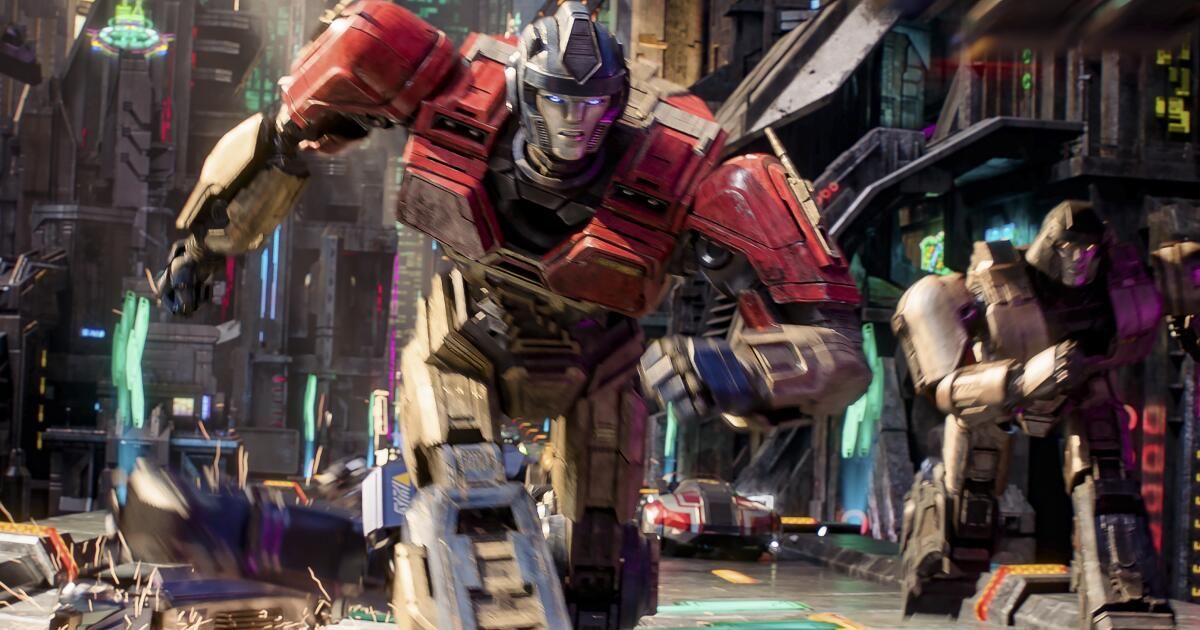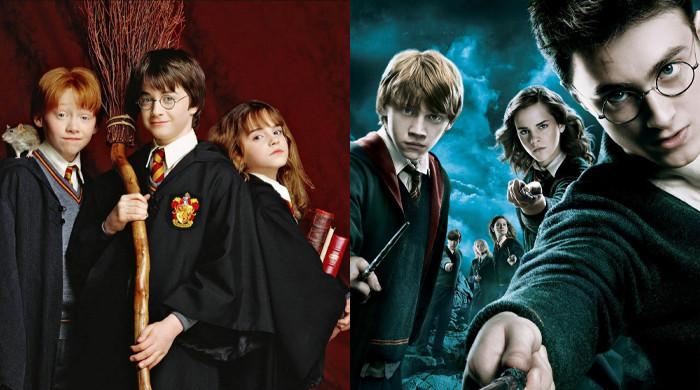Let the medium of animation breathe new life into an intellectual property that has been watered down with every sequel that’s been created for the big screen. “Transformers One,” which serves as a prequel to the entire narrative universe about an alien race of metallic humanoids with the ability to transform into vehicles, traces the origin of the conflict between the benevolent Autobots and the evil Decepticons before the two groups even existed.
The Transformers movies that began hitting theaters in 2007, most of which were directed by Michael Bay, are best described as hybrid rather than “live-action,” considering the number of digitally created characters, environments and effects conceived for them with varying degrees of success. But this fully animated film from Oscar-winning director Josh Cooley (“Toy Story 4”) presents an elegantly crafted world of hard, shiny surfaces that seems suited to exist in a fantasy realm separate from flesh-and-blood humans.
The heartfelt romance between Orion Pax (voiced by Chris Hemsworth), a reckless idealist, and D-16 (Brian Tyree Henry), the more cautious and skeptical of the two, is anchored by fist bumps that convey genuine camaraderie and other exchanges of muscular tenderness. It serves as the emotional core of the saga. The friends are mining energon, the substance that powers their planet, while charismatic leader Sentinel Prime (Jon Hamm) searches for the Matrix of Leadership, an ancient artifact that would end the need for energon mining altogether.
Orion Pax and D-16 were born without the ability to transform, which effectively dictates which robotic beings are relegated to manual labor, and have little hope of being anything more than invisible cogs in the machine. That is until they break the rules and embark on a quest to find the Matrix of Leadership on their own. No one expects a “Transformers” movie to have a class-conscious reading, one that questions why those in power exploit the masses left without a path to ascend the socioeconomic ladder. But that’s precisely what’s etched into the film’s mechanical heart. (It turns out that it was in fact a deep ideological divide that led Optimus Prime and Megatron to become enemies.)
This installment definitely benefits from the low expectations instilled by its predecessors, but that doesn’t take away from the way its trio of writers (Andrew Barrer, Gabriel Ferrari, and Eric Pearson) craft a consistently humorous script packed with witty banter and quips that mostly work. At times, there are even some slightly edgy choices that seem bold for a release aimed primarily at younger audiences. What holds the story together amidst the accumulation of sci-fi terms and lore, however, is the compellingly intense bond these male leads have cultivated. There’s an earnestness to their relationship that makes the heartbreak of their eventual separation seem earned.
Visually, “Transformers One” works thanks to the believability of its textures: 3DCG animation might be the most appropriate technique for these characters. That’s not to take anything away from the original hand-drawn 1980s animated series, but the Transformers certainly look more tangible here.
Without getting into their baffling physiology, these metal-forged entities are essentially walking reflective objects, meaning the artists have to account for how light hits their bodies, how they react to blunt force or colliding with others made of the same material during multiple high-speed action sequences aboard a train or during a thrilling race.
Orion Pax’s crew of more aspiring miners also includes the stern Elita-1 (Scarlett Johansson) and the cheerful B-127 (Keegan-Michael Key). The latter delivers some of the funniest lines as the writers poke fun at his extreme loneliness working in isolation and the imaginary friends he’s created to cope. The four-member crew’s designs fit with the brutalist backdrops of what look like inverted skyscrapers and contrast with the rocky, dystopian landscapes seen later in their ordeal. These stylistic choices, while not often unique, are at least cohesive.
Compared to other attempts to keep a franchise alive, “Transformers One” comes as one of the year’s most welcome surprises. Almost radically, its premise takes on a biblical dimension as the inhabitants of the planet Cybertron realize their lives have been dictated by a false prophet. Cooley’s film is still largely a conventional product rooted in the build-on-the-fly mythology of these sentient machines, but there’s an attention to its characters’ motivations and desires that’s missing from many of the Hollywood movies looking to rake in cash. Animation can be a transformative and liberating force, even for stories that have been told ad nauseum.
'Transformers One'
Classification: PG, for sci-fi violence and animated action throughout, and language
Duration: 1 hour, 44 minutes
Playing: In general release on Friday, September 20












